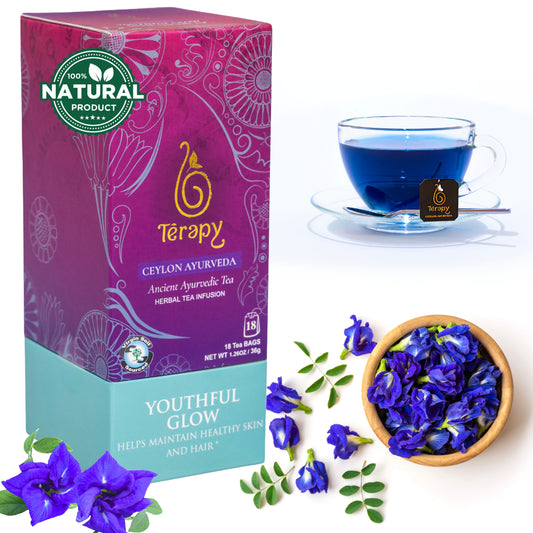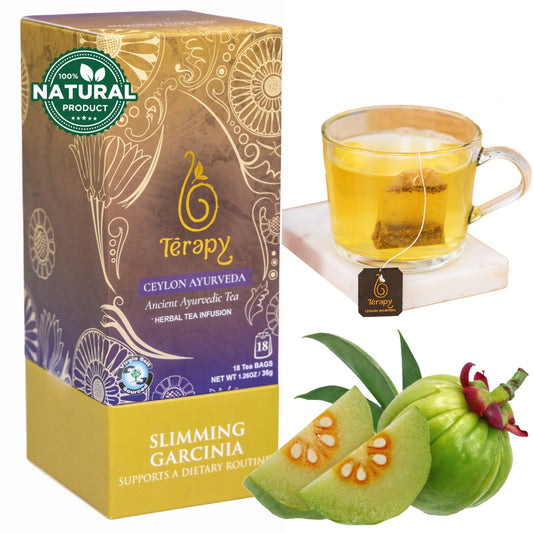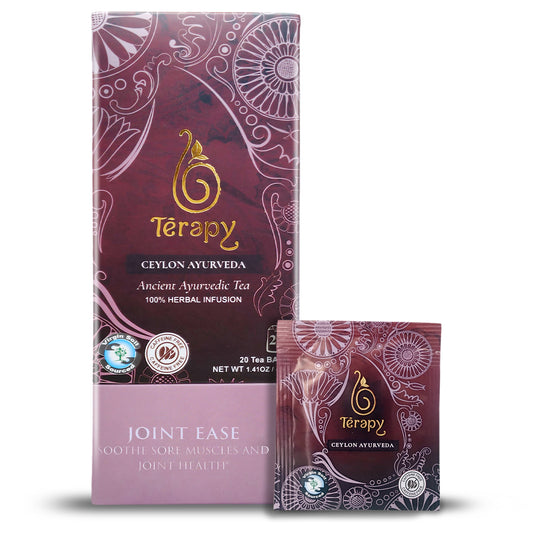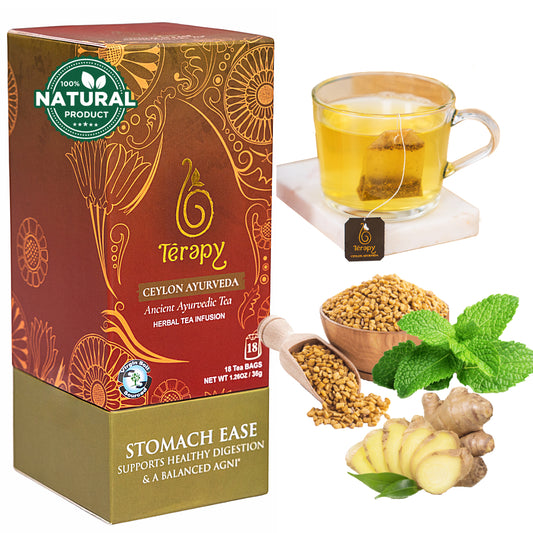Chamomile: A Soothing Herb with Healing Properties in Ayurveda
 Chamomile, a delicate, daisy-like flower from the Matricaria chamomilla or Chamaemelum nobile plant, has long been revered for its calming and therapeutic properties. Known for its gentle, sweet fragrance and soothing effects, chamomile is widely used in herbal medicine to promote relaxation and well-being. Its use spans across various cultures, and in Ayurveda, the traditional system of medicine in India, chamomile is considered a valuable herb for restoring balance and supporting overall health. This article explores chamomile’s medicinal benefits, its role in Ayurveda, and how it can be used effectively for healing.
Chamomile, a delicate, daisy-like flower from the Matricaria chamomilla or Chamaemelum nobile plant, has long been revered for its calming and therapeutic properties. Known for its gentle, sweet fragrance and soothing effects, chamomile is widely used in herbal medicine to promote relaxation and well-being. Its use spans across various cultures, and in Ayurveda, the traditional system of medicine in India, chamomile is considered a valuable herb for restoring balance and supporting overall health. This article explores chamomile’s medicinal benefits, its role in Ayurveda, and how it can be used effectively for healing.
Health Benefits of Chamomile
Chamomile is widely known for its calming and anti-inflammatory effects, making it a staple in both modern and traditional herbal medicine. Some of its key health benefits include:
1. Promotes Relaxation and Reduces Stress
Chamomile is best known for its ability to promote relaxation and reduce stress. The herb contains apigenin, a flavonoid that binds to specific receptors in the brain, helping to induce a state of calm. Chamomile is often used as a natural remedy for anxiety, insomnia, and general nervous tension. Drinking chamomile tea before bed is a popular method to help people wind down and improve sleep quality.
2. Supports Digestive Health
Chamomile is widely used to support the digestive system. It helps relax the muscles of the digestive tract, which can ease symptoms of indigestion, bloating, and gas. Chamomile also has mild anti-inflammatory and antimicrobial properties, making it useful in treating conditions like irritable bowel syndrome (IBS) and stomach cramps. Drinking chamomile tea after meals can promote digestion and soothe an upset stomach.
3. Anti-Inflammatory and Pain-Relieving
Chamomile’s anti-inflammatory properties make it an effective herb for reducing pain and inflammation in the body. It is particularly beneficial in treating conditions like arthritis, muscle aches, and joint pain. Chamomile can be applied topically in the form of compresses or ointments to relieve localized pain and swelling, or it can be taken internally to reduce systemic inflammation.
4. Skin Health and Healing
Chamomile has natural healing properties that make it beneficial for the skin. It has been used for centuries to treat skin irritations, such as eczema, dermatitis, and rashes, due to its ability to reduce inflammation and promote skin regeneration. Chamomile’s antioxidant properties also help to protect the skin from oxidative stress, which can contribute to premature aging and skin damage. Chamomile extract is commonly used in skincare products to soothe and hydrate the skin.
5. Immune Support
Chamomile has mild antimicrobial properties, which makes it effective in boosting the immune system and fighting off infections. Chamomile tea can be used to ease symptoms of colds and flu, such as sore throats, congestion, and coughs. Its soothing effects can help reduce irritation in the throat, and its mild sedative properties may assist in promoting rest and recovery.
6. Menstrual Discomfort Relief
Chamomile is often used to alleviate menstrual cramps and other symptoms associated with menstruation. The herb’s anti-inflammatory and muscle-relaxing effects help to ease the discomfort of cramps, bloating, and abdominal pain. Drinking chamomile tea during menstruation can also help to reduce mood swings and stress.
Chamomile in Ayurveda: A Gentle Healer
In Ayurveda, chamomile is considered a tridoshic herb, meaning it can be used to balance all three doshas—Vata, Pitta, and Kapha—when used correctly. Each dosha represents a fundamental energy that governs various functions in the body. Chamomile’s cooling, soothing, and anti-inflammatory properties make it particularly useful for calming aggravated Pitta dosha (which is associated with heat, inflammation, and irritability) and Vata dosha (associated with dryness, anxiety, and restlessness). It is also beneficial in balancing Kapha dosha, especially when dealing with issues like digestive sluggishness or excessive mucus production.
Ayurvedic Uses of Chamomile
 In Ayurveda, chamomile is used in various forms—such as teas, powders, oils, and poultices—to address a range of conditions and promote overall well-being. Below are some of the key ways chamomile is used in Ayurvedic medicine:
In Ayurveda, chamomile is used in various forms—such as teas, powders, oils, and poultices—to address a range of conditions and promote overall well-being. Below are some of the key ways chamomile is used in Ayurvedic medicine:
1. As a Calming Tonic
Chamomile is widely used in Ayurveda as a calming tonic for the nervous system. It is often recommended to help reduce stress, anxiety, and insomnia. Ayurvedic practitioners may suggest chamomile tea or chamomile-infused ghee (clarified butter) to help induce a peaceful mind, especially for individuals who suffer from Vata imbalances like restlessness, anxiety, or insomnia. Chamomile’s sedative properties make it a great remedy for calming the mind and improving sleep quality.
2. Digestive Support
Chamomile is a valuable herb for supporting the digestive system in Ayurveda. It is believed to help balance Agni (digestive fire), which is a key concept in Ayurvedic digestion. A sluggish or weak Agni can lead to symptoms like bloating, gas, and indigestion. Chamomile is used to soothe the digestive tract, reduce bloating, and support the digestive process. Drinking chamomile tea after meals or using chamomile in digestive formulations helps maintain a healthy and efficient digestive system.
3. Skin Care
Chamomile is also a key ingredient in many Ayurvedic skincare treatments due to its anti-inflammatory, antimicrobial, and healing properties. It is often used in herbal poultices, creams, and oils to soothe skin conditions such as eczema, acne, and rashes. Chamomile’s calming effects help reduce redness and inflammation, promoting healthier, clearer skin. Its antioxidant properties help protect the skin from free radical damage and slow the aging process.
4. Respiratory Health
Chamomile is used in Ayurveda to support the respiratory system, particularly for conditions related to excess mucus and congestion. Chamomile’s anti-inflammatory properties help reduce inflammation in the airways, and it is often used in conjunction with other herbs like licorice root and ginger to treat colds, coughs, and sinus congestion. Chamomile’s soothing effects on the throat also help relieve soreness and irritation caused by respiratory infections.
5. As a Menstrual Aid
Chamomile has long been used in Ayurveda to alleviate symptoms of menstruation. It is known for its ability to relax the muscles of the uterus, reducing the pain and cramping associated with periods. Chamomile’s calming and anti-inflammatory effects make it an ideal herb to support women’s health during menstruation. Drinking chamomile tea during the menstrual cycle can help reduce cramps, ease bloating, and calm mood swings.
Methods to Digest Chamomile in Ayurveda

Chamomile can be consumed in several ways to harness its healing benefits in Ayurveda. Here are some effective methods to incorporate chamomile into your daily routine:
1. Chamomile Tea
Chamomile tea is one of the most common and popular ways to consume the herb. To prepare, steep 1–2 teaspoons of dried chamomile flowers in hot water for about 5-10 minutes. Drinking chamomile tea after meals or before bed can help support digestion, reduce stress, and promote restful sleep. It is particularly effective for calming the mind and soothing the digestive tract.
2. Chamomile and Ghee (Clarified Butter)
In Ayurveda, ghee is often used as a vehicle to deliver the benefits of herbs. Chamomile-infused ghee is considered a potent remedy for calming Vata dosha and promoting restful sleep. To prepare chamomile ghee, add dried chamomile flowers to melted ghee and allow the mixture to infuse for a few hours before straining. Take a small amount of this infused ghee before bed to help calm the nervous system and support digestion.
3. Chamomile Oil
Chamomile oil is used topically in Ayurveda to treat skin irritations, reduce inflammation, and ease muscle aches. Chamomile essential oil can be diluted with a carrier oil, such as coconut or sesame oil, and massaged into areas of pain or inflammation. It is also used in Ayurvedic massage practices to promote relaxation and soothe the body and mind.
4. Chamomile Poultices
A poultice made from chamomile can be applied directly to the skin to relieve local inflammation, redness, or pain. To make a chamomile poultice, steep chamomile flowers in hot water, then soak a cloth in the infusion and apply it to the affected area. This can help soothe conditions like skin rashes, eczema, or muscle soreness.
5. Chamomile with Honey or Lemon
For added flavor and therapeutic effects, chamomile tea can be sweetened with a small amount of honey or lemon. Honey adds a natural sweetness while providing additional antimicrobial and soothing properties. Lemon can enhance digestion and add a refreshing taste to the tea.
Try Our Terapy Ceylon's Cozy Chamomile Tea
Chamomile, with its gentle, soothing properties, is a remarkable herb that has earned its place in both traditional and modern medicine. In Ayurveda, chamomile is valued for its ability to balance the mind, body, and spirit. Whether used for promoting relaxation, supporting digestion, alleviating pain, or enhancing skin health, chamomile offers a wide array of benefits. Its calming, anti-inflammatory, and healing properties make it an excellent herb for restoring harmony and promoting well-being. By incorporating chamomile into your daily routine, you can experience the many therapeutic benefits of this beloved herb, while supporting overall health and vitality.
Featured collection
-

Youthful Glow Tea
SaleYouthful Glow Tea
Regular price From $17.99Regular priceUnit price / per$19.99Sale price From $17.99Sale -

Slimming Garcinia Tea
SaleSlimming Garcinia Tea
Regular price From $17.99Regular priceUnit price / per$19.99Sale price From $17.99Sale -

Joint Ease Tea
SaleJoint Ease Tea
Regular price From $14.99Regular priceUnit price / per$17.99Sale price From $14.99Sale -

Stomach Ease Tea
SaleStomach Ease Tea
Regular price From $15.99Regular priceUnit price / per$17.99Sale price From $15.99Sale





